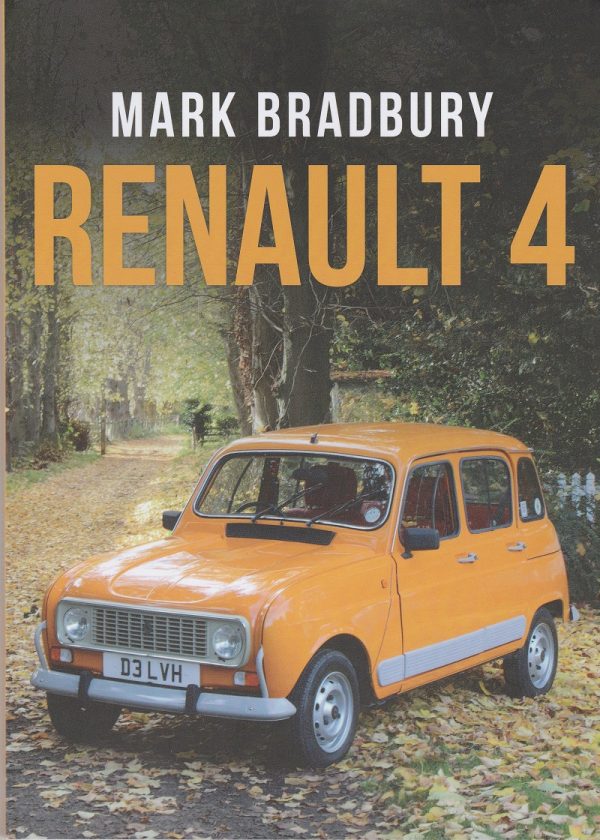
By Mark Bradbury
2022 review by Autolycus
The Renault 4 sold over eight million examples and was built or assembled in twenty-eight countries – but there has never been an English-language book on the car. Until now. This book, modest in dimensions and with only 96 pages, has done a superb job in relating its story.
The book is well written in a friendly and highly readable style. It starts with a brief history of the Renault company and the story of the successful post-war 4cv; it then succinctly explains the conditions of growing prosperity and cultural change that made it essential for Renault to launch in 1961 a classless and versatile car that would be equally at home in the city and the countryside.
The chapters on the development of the Renault 4 and the changes through the decades that followed come alive thanks to the author’s evidently deep knowledge of and enthusiasm for his subject, supported by wonderful images. These come from the author’s own collection, from a few fellow enthusiasts and, crucially, from Renault’s own Classic Archives in Paris.
There are many delightful surprises: the Renault 4 was the first car to have a sealed cooling system; it also used sealed ball joints and track rod ends when most cars still required regular greasing – leading to the French advertising strapline: “pas d’eau, pas de graissage, juste un peu d’essence.” And the 1963 Parisienne model matched black paint with gold cane wickerwork or Scottish tartan panels, in the same year that Peter Sellers was having similar things done with his Mini.
Renault’s clever promotional campaigns are covered (how about leaving 200 cars around Paris with the keys in them and a sticker saying “prenez le volant”?), as are the company’s competition and expedition successes, covered in the last chapter.
One final ingredient that makes this book such a joy to read lies in the captions. These are far longer than normal and full of observations on small and large improvements to a car that, without this inside knowledge, might seem to have hardly changed its appearance in thirty-three years of production. There is also a sprinkling of impish humour in text and captions that put a smile on this reviewer’s face.
A few typos, and a slightly difficult-to-read orange colour to the caption text (presumably to match the paintwork of the car on the cover, or possibly the publisher’s house colours?), can easily be forgiven. For the rest, this is a miniature masterclass on how to write a concise but fascinating book on an important car.
Publisher: Amberley Publishing www.amberley-books.com
Price: £15.99 plus postage (discounted on some sites). Also available as an e-book (for example on Amazon for Kindle).
Description: softback (234 x 167 mm), 96 pages; black & white and colour images.
ISBN: 978-1-3981-1335-0







Leave a Comment